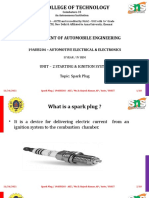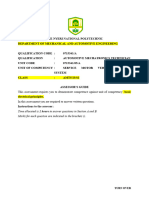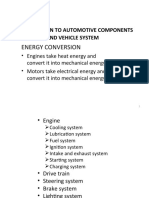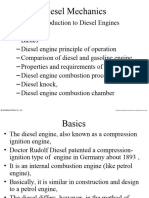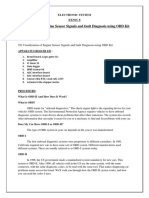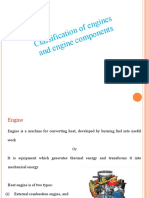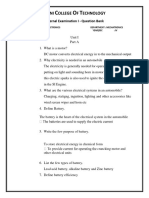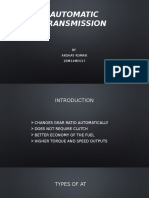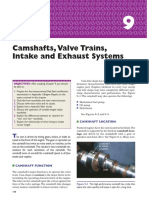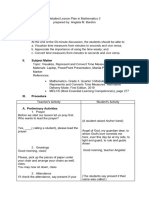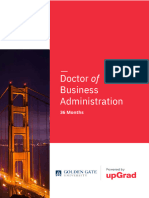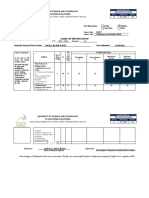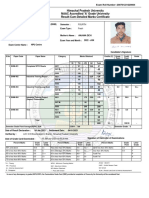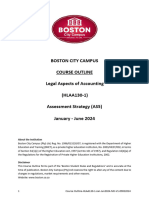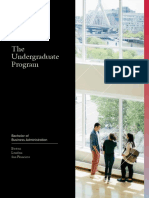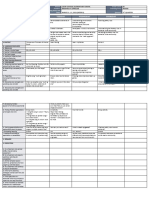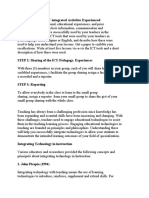0% found this document useful (0 votes)
112 views20 pagesAmm Num
The document outlines the Malawi TEVET Foundation Certificate Module Package for Automobile Mechanics Numeracy (AMM/NUM) Level 1, which is designed to provide training in motor vehicle calculations. It includes details on the module's purpose, learning outcomes, assessment strategies, and the importance of adhering to the TEVET Qualification Framework. The package emphasizes competence-based education and training, with a focus on practical application and safety in training environments.
Uploaded by
kastomalfred64Copyright
© © All Rights Reserved
We take content rights seriously. If you suspect this is your content, claim it here.
Available Formats
Download as PDF, TXT or read online on Scribd
0% found this document useful (0 votes)
112 views20 pagesAmm Num
The document outlines the Malawi TEVET Foundation Certificate Module Package for Automobile Mechanics Numeracy (AMM/NUM) Level 1, which is designed to provide training in motor vehicle calculations. It includes details on the module's purpose, learning outcomes, assessment strategies, and the importance of adhering to the TEVET Qualification Framework. The package emphasizes competence-based education and training, with a focus on practical application and safety in training environments.
Uploaded by
kastomalfred64Copyright
© © All Rights Reserved
We take content rights seriously. If you suspect this is your content, claim it here.
Available Formats
Download as PDF, TXT or read online on Scribd
/ 20






